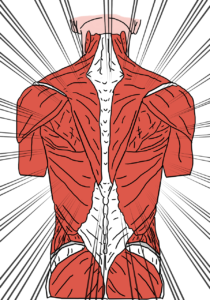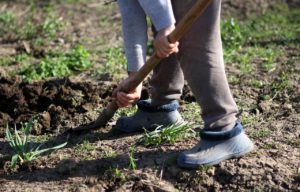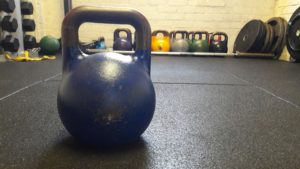Having seen a few patients recently with Back Pain I’ve heard a fair few stories about what they have been told about the various ways they might be able to “fix” it. I thought now might be a good time to write a short blog about back pain problems, myths and the current state of physiotherapy thinking.
NOTE:
 This is not meant to be a “be all and end all” of back pain – the debates and arguments about the veracity and validity of various methods etc have been floating around for as long as there has been back pain. What this IS meant to do is give a little more clarity into what might or might not be causing the issue and things you might be able to do about it.
This is not meant to be a “be all and end all” of back pain – the debates and arguments about the veracity and validity of various methods etc have been floating around for as long as there has been back pain. What this IS meant to do is give a little more clarity into what might or might not be causing the issue and things you might be able to do about it.
If you are reading this and have back pain, and you are having issues with incontinence since the onset of pain, or if you have pins and needles/altered sensation down both your legs at the same time, or are numb around the area where you would associate sitting if you were on a horses saddle, don’t bother reading any further. Pick up the phone. Dial 999. Go to A&E. I don’t want to freak you out, but if any of this paragraph applies to you, go get it checked out.
Why does it hurt ALL the time?!
Back pain comes in many shapes and forms, but we all know of “Aunty Doris” or someone who had incapacitating back pain, or never really walked properly after having a fall and hurting their back, or whatever – so we all have a bit of emotional connection to back pain. Because of this emotive connection with pain in the back, it always seems much, much worse than – for example – tweaking an ankle, a wrist or a shoulder… why is this?
Think about it… if your wrist hurts, you strap it up, stop using it, or generally reduce the amount that it gets moved. Brilliant – it only hurts occasionally. Pretty much the same happens with an ankle, a leg, whatever. You try to stop using it and are not surprised when you put weight through it and it hurts….
You use your back EVERY time you move…be it an arm, a leg, your neck, whatever – the trunk of your body stabilises itself. The result of this is that if your back hurts, it doesn’t really matter what you do, you’re probably going to involve your back…which is going to hurt – and is pretty tiring, physically and emotionally. Which is why it can be really annoying and tiresome – as it is so hard not to use your back when you do everything.
Non-specific LBP? Blame the Muscles?
 Most of the back pain I see appears to be muscular in origin. Even if someone has previously had a disc problem/bulge etc. by the time they get to me, the issue is seldom that there is a disc bulge. (by the way, a disc bulge is not necessarily a problem in itself – the prevalence of bulging/herniated discs in the general population is somewhere in the region of 40% – and that is in unsymptomatic people…those who do not have pain).
Most of the back pain I see appears to be muscular in origin. Even if someone has previously had a disc problem/bulge etc. by the time they get to me, the issue is seldom that there is a disc bulge. (by the way, a disc bulge is not necessarily a problem in itself – the prevalence of bulging/herniated discs in the general population is somewhere in the region of 40% – and that is in unsymptomatic people…those who do not have pain).
A lot of the time it is the muscles in the back which are a bit overused and under appreciated that decide to shout at you and tell you not to do quite so much. They do so after being used for gardening after a bit of a lay off, playing football for the first time in a long time, playing with grandchildren – or carrying them around for a day or so when you are unused to carrying such a weight. (they may or may not be squirming around!).
Training error….
The thing all these scenarios have in common are “training error” – something where the body has been happily minding its own business, and then the brain says – let’s go and do something! The body then gets a whole lot more than it bargained for, or has been trained to accept and the resulting aches and pains – which can go on for quite a while, create a whole lot of concern for the person in that body.
Essentially, you’re putting the body under more load than it is used to and the muscles are complaining about it.
Belief vs reality
Ah yes, the dichotomy between what we *think* we can do and what we are actually capable of doing. The problem is that we see ourselves as fairly resilient, and small things like playing frisbee on the beach or having a day out with the grand kids is not particularly worrisome. They are a part and parcel of life, and so do not register highly on our “threat” monitor.
If I gave you a couple of grandkids and told you to go enjoy the day at an aquarium, you might not think twice about it. Now… imagine if I gave you a 16kg kettlebell and told you to lug it around an aquarium all day, manoeuvring it in and out of a car etc – even before you add in the squirming etc. it’s still going to be quite a demanding day – especially if that isn’t something that you do often. The muscles around your body are certainly going to let you know about it in the morning. Most likely, your back.
The morning after – or even the one after that – you are certainly going to know about it. Your back will hurt and you won’t really know why – and every time you move it is agonising…. Oh no! What if this is it?! You’ve done your back in, remember Aunty Doris who did her back in and never walked again….what if that has happened to you?! – and so in comes the emotional crisis along with the pain and down a rabbit hole you go.
Things to do – things not to do
What your back needs now is easy, controlled, intelligent and non-threatening movement. In this case, it generally is not a disc problem – even if you have been diagnosed with one previously, or had one imaged – it is not necessarily the conclusion that you should be jumping to. Your body is annoyed with what you’ve put it through and is asking you to be a bit nicer.
What it does not need is you sitting on google looking at all the things it *might* be and working yourself up into a tiz that it is worse than it is – that you need opioid painkillers etc etc. Don’t catastrophise. (Yes, I know it is hard to do, but seriously – don’t).
Just imagine for a moment – running 15 miles without having previously practiced. You might expect to hurt a bit – but you wouldn’t be panicking about it. You’d know what was going on and would expect to hurt for a while before getting better. This kind of muscular back pain is very much the same thing.
How to prevent this from happening?
 I suppose the best thing to suggest is to be used to the loads which you are going to place on your body. Pre-empt the weight you might end up lugging around the place. Practice with weights. If you can happily lift/squat with 20/30/40 kg then a 16kg child should be less of a problem than if you cannot. If you are going to be digging all day – a spade with dirt on it probably weighs a considerable amount more than you think. If you can lift 30kg, the resulting back pain at the end of the day will (hopefully) be less.
I suppose the best thing to suggest is to be used to the loads which you are going to place on your body. Pre-empt the weight you might end up lugging around the place. Practice with weights. If you can happily lift/squat with 20/30/40 kg then a 16kg child should be less of a problem than if you cannot. If you are going to be digging all day – a spade with dirt on it probably weighs a considerable amount more than you think. If you can lift 30kg, the resulting back pain at the end of the day will (hopefully) be less.
(I say this, but even if I’m fit and well, a day of digging can leave me with a fair bit of aching in all kinds of places).
In these kinds of scenarios, yes, lifting stuff and being used to lifting it with confidence goes a long way to reducing the incidence of back pain. Your muscles are there to be used. If you don’t use them they fade away… you might *think* you still have the strength, but without practice, the chances are, you don’t.
The mischief you do to your back is probably the result of a mismatch of what you *think* you can do, and what you *actually* can do.




